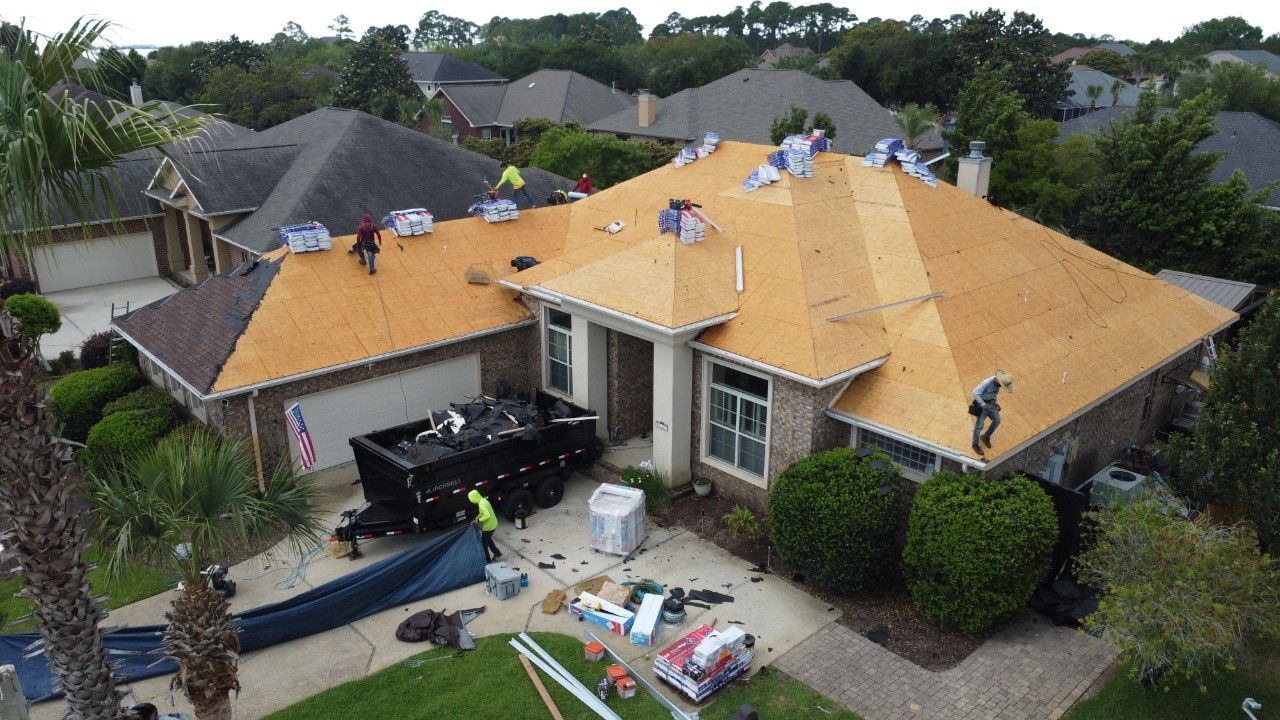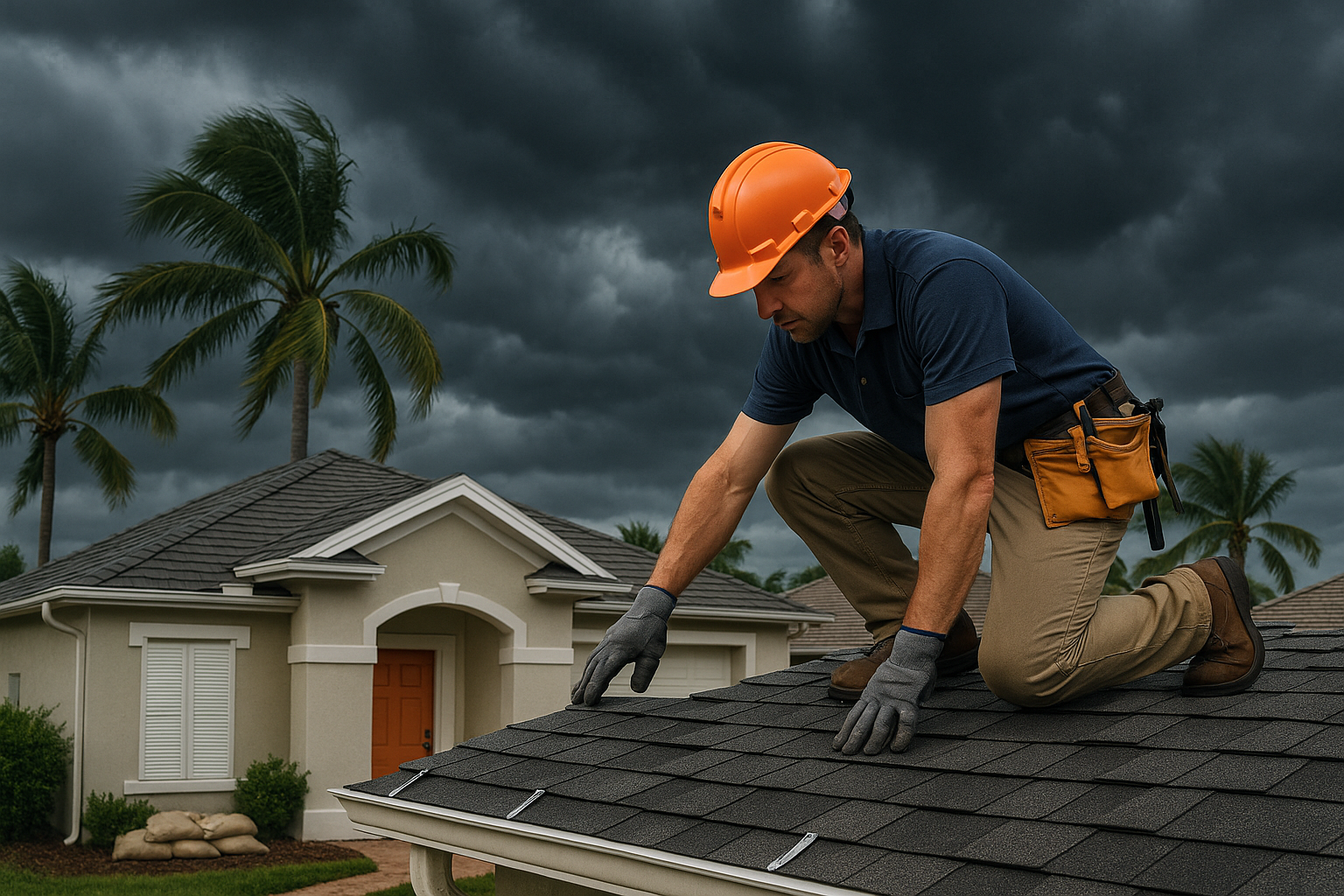May 26, 2025
The Importance of Your Roofing During the Summers in Northwest Florida

1. Introduction
Northwest Florida summers are a force to be reckoned with—scorching heat, intense humidity, sudden thunderstorms, and hurricane threats are all part of the seasonal landscape. For homeowners, these environmental conditions place significant stress on one of the most critical structural components of their property: the roof.
Far beyond its visual appeal, your roofing system plays a central role in protecting your home from harsh summer elements, regulating indoor temperature, and preserving the long-term value of your investment. For residents across Pensacola, Destin, Fort Walton Beach, and surrounding Gulf Coast communities, preparing your roof for the season is not just good maintenance—it’s a necessity.
That’s where trusted local professionals like Best Roofing And Construction Corp. come in. With deep expertise in coastal roofing challenges and solutions tailored for Florida’s unique climate, they are your first line of defense against summer roofing issues.
2. Understanding Northwest Florida’s Summer Climate
Northwest Florida is characterized by a subtropical climate marked by hot, humid summers and an active hurricane season. From late May through September, temperatures often soar above 90°F (32°C), with humidity levels peaking at 70–80%. These conditions create a unique set of challenges for roofing systems.
Proximity to the Gulf of Mexico means that homes in this region are frequently exposed to salt-laden air, tropical storms, and even full-fledged hurricanes. According to the National Weather Service (NOAA), the region experiences frequent afternoon thunderstorms and is among the top areas in the U.S. for lightning strikes during the summer months. These weather extremes significantly accelerate wear and tear on roofing materials and components.
Understanding these climatic conditions is the first step in knowing why your roof must be built—and maintained—to withstand Northwest Florida’s fierce summer environment.
3. The Effects of Heat and UV on Roofing Materials
Prolonged exposure to high temperatures and ultraviolet (UV) radiation can rapidly degrade common roofing materials. Asphalt shingles, for instance, may soften and begin to blister under the relentless sun, leading to granule loss and weakened structural integrity. Tile roofs can crack due to heat expansion, while sealants and adhesives used in flashing and vents can dry out and fail prematurely.
Even metal roofs, while generally more durable, can suffer from thermal expansion that leads to fastener loosening, warping, and corrosion—especially when exposed to salty air from the Gulf. The accumulated damage from heat and UV exposure not only diminishes your roof’s performance but also compromises your home's energy efficiency, driving up cooling costs and putting additional strain on HVAC systems.
4. Summer Storms and Roofing Vulnerabilities
In Northwest Florida, summer storms come fast and hit hard. Sudden downpours, strong wind gusts, and airborne debris can wreak havoc on unprepared or aging roofing systems. Missing shingles, dented metal panels, or lifted tiles are common post-storm problems, often resulting in leaks and interior water damage.
Moreover, clogged gutters and poor drainage during heavy rains can cause water pooling and seepage at roof edges, further degrading the underlying structure. Storms may also dislodge flashing around chimneys, skylights, and vents—key vulnerabilities that, if ignored, lead to expensive repairs down the road.
Investing in impact-resistant materials and regularly inspecting your roof’s protective components can drastically reduce your home’s exposure to storm damage.
5. Thermal Shock and Material Fatigue
One often overlooked but highly damaging phenomenon is thermal shock. This occurs when roofing materials expand under intense heat during the day and then contract rapidly when temperatures drop in the evening. Repeated cycles of expansion and contraction cause materials to become brittle, warp, or detach over time.
This fatigue can affect every type of roofing, especially those installed without proper ventilation or thermal underlayment. In Northwest Florida’s climate—where the temperature swing from day to night can be significant—choosing resilient, heat-adaptable roofing materials is essential for long-term structural stability.
6. Common Summer Roofing Problems in Florida
Besides UV and storm damage, Florida roofs face a host of seasonal issues. The humidity provides a perfect breeding ground for algae, moss, and mildew—especially on north-facing or shaded roof sections. Over time, this biological growth can stain roofing materials and lead to structural deterioration.
Shingles may begin to warp, curl, or blister under the extreme summer heat, while poor attic ventilation traps hot air, causing even greater stress on the entire roofing system. These problems not only compromise aesthetics but also reduce the roof’s ability to reflect heat and moisture efficiently.
7. Importance of Regular Roof Inspections in Summer
A proactive roof inspection during the summer can identify minor issues before they escalate into costly repairs. Professional roofers can detect hidden damage such as deteriorating flashing, small leaks, or weak seams—problems often invisible from the ground.
Scheduling inspections at the beginning and end of summer ensures that your roof is prepared for both peak heat and hurricane season. A comprehensive inspection should include evaluation of shingles, flashing, gutters, attic ventilation, and underlayment integrity.
8. Preventive Maintenance and Roof Care Tips
Simple preventive measures can go a long way in prolonging your roof’s life. Start by ensuring your gutters and downspouts are clean and directing water away from the foundation. Trim any tree branches that overhang your roof to reduce debris buildup and potential storm damage.
Sealants around vents and skylights should be checked and reapplied if cracked or peeling. Additionally, removing algae and moss with appropriate treatments can prevent water retention and rot. These routine steps are inexpensive and highly effective in maintaining roof performance.
9. Energy Efficiency and Summer Roofing
Your roof plays a vital role in regulating indoor temperatures. Reflective materials and cool roofing technologies—such as coated metal panels or white tiles—can reduce surface heat absorption by up to 50%. This translates to lower attic temperatures and reduced air-conditioning usage.
Installing radiant barriers and upgrading attic insulation further improves thermal efficiency. These systems work together to keep your home cooler during peak summer months, slashing energy bills and creating a more comfortable living environment.
10. Best Roofing Materials for Hot and Humid Climates
When selecting roofing materials for Northwest Florida, durability, reflectivity, and mold resistance are key. Metal roofs coated with reflective finishes are excellent for heat resistance and storm protection. Clay and concrete tiles offer natural insulation and longevity but may require reinforced structural support.
Asphalt shingles are affordable and widely used, especially those with algae-resistant granules and UV-reflective technology. For optimal performance, homeowners should look for Energy Star-rated roofing materials designed for southern climates.
11. Preparing Your Roof for Hurricane Season
Hurricane preparation should start with reinforcing your roof. This may involve installing hurricane straps or clips, securing decking, and upgrading to impact-rated shingles or panels. Waterproof underlayment and synthetic barriers offer extra protection against water intrusion during high-wind events.
Ensuring compliance with the Florida Building Code (FBC) is also crucial. Homes built or renovated under FBC standards are more likely to withstand extreme storm events, minimizing both damage and insurance complications.
12. Signs It’s Time for a Roof Replacement
Knowing when to replace your roof can save thousands in emergency repairs. Common indicators include widespread curling or missing shingles, persistent leaks, interior water stains, and visible sagging. Roofs over 20 years old—especially in high-heat zones—often show signs of material fatigue.
Summer is an ideal season for replacement due to favorable weather conditions. Upgrading proactively ensures your home is protected for years to come, with greater energy efficiency and fewer seasonal disruptions.
13. Insurance, Warranties, and Roofing Claims
Understanding your homeowner’s insurance coverage is essential, especially during hurricane season. Most policies cover damage from storms but require documentation proving that the roof was properly maintained.
Professional inspections and repair reports from licensed contractors like Best Roofing And Construction Corp. can strengthen your claim. Also, check the warranty on your roofing materials—many manufacturers offer specific protections for heat or storm damage if installed correctly.
14. Why Choose Best Roofing And Construction Corp.?
Best Roofing And Construction Corp. brings years of hands-on experience with Northwest Florida’s toughest roofing challenges. Their team is fully licensed, insured, and trained to comply with Florida Building Code standards, offering peace of mind and professional results.
From inspections and maintenance to full roof replacements and roof repairs, we provide tailored roofing solutions that stand up to Florida’s climate. With glowing testimonials from Pensacola to Panama City, we’ve built a reputation as a trusted local partner in home protection.
15. Conclusion
Your roof is your home’s first line of defense against the extreme conditions of a Northwest Florida summer. Between the sun’s punishing heat, sudden storms, and looming hurricane threats, ensuring your roof is ready is not just smart—it’s essential.
With professional insight, timely inspections, and quality materials, you can safeguard your home, lower your energy bills, and extend the lifespan of your roof. Don’t wait for damage to strike—schedule your summer roof inspection today with Best Roofing And Construction Corp. and stay protected year-round.

CONTACT US
Get Your Free Quote Today
Don’t wait for roof damage or rising energy costs to catch you off guard.
Our licensed experts are ready to protect your home with durable solutions designed for Northwest Florida’s unique climate.

